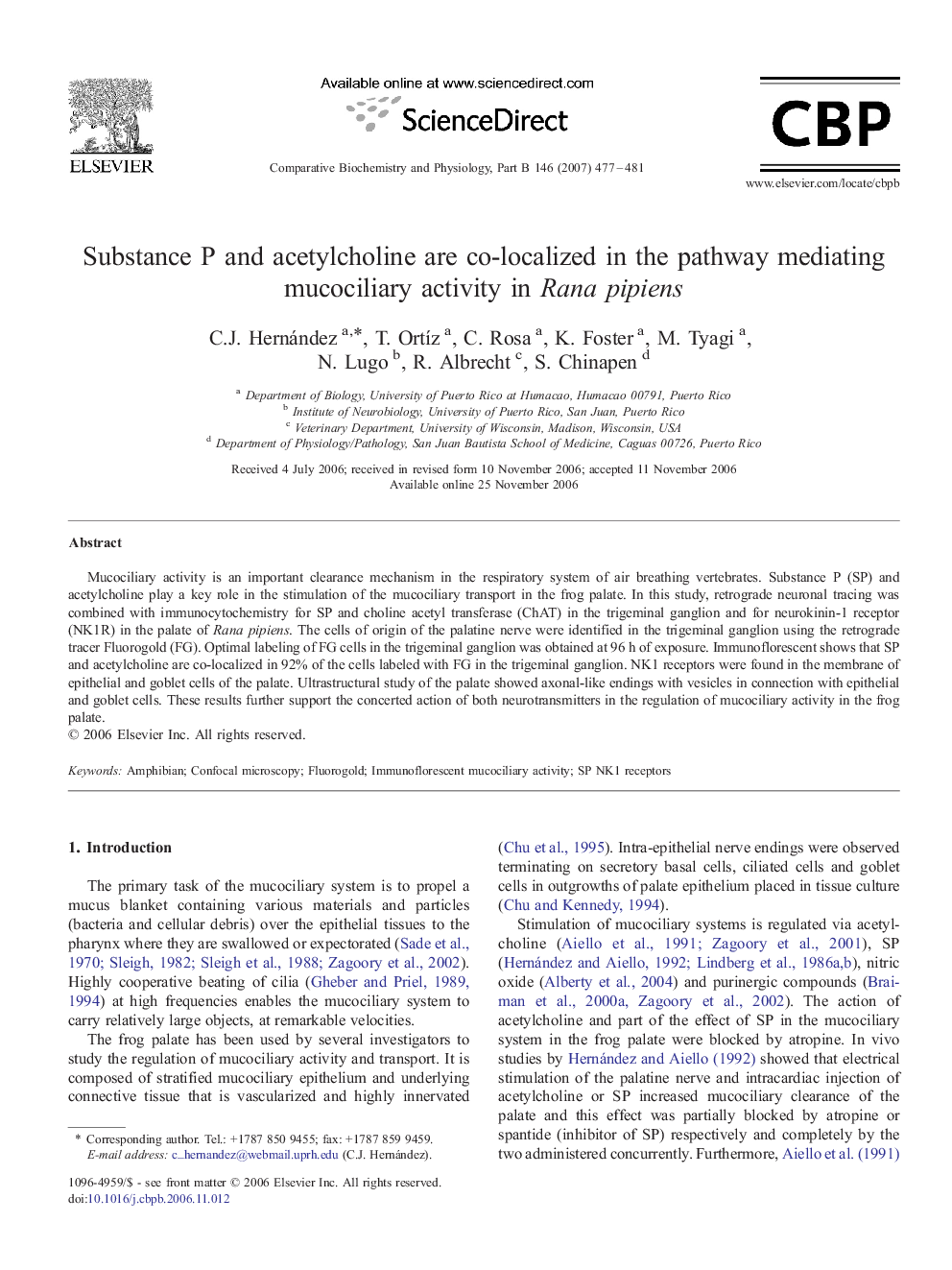| Article ID | Journal | Published Year | Pages | File Type |
|---|---|---|---|---|
| 1976459 | Comparative Biochemistry and Physiology Part B: Biochemistry and Molecular Biology | 2007 | 5 Pages |
Mucociliary activity is an important clearance mechanism in the respiratory system of air breathing vertebrates. Substance P (SP) and acetylcholine play a key role in the stimulation of the mucociliary transport in the frog palate. In this study, retrograde neuronal tracing was combined with immunocytochemistry for SP and choline acetyl transferase (ChAT) in the trigeminal ganglion and for neurokinin-1 receptor (NK1R) in the palate of Rana pipiens. The cells of origin of the palatine nerve were identified in the trigeminal ganglion using the retrograde tracer Fluorogold (FG). Optimal labeling of FG cells in the trigeminal ganglion was obtained at 96 h of exposure. Immunoflorescent shows that SP and acetylcholine are co-localized in 92% of the cells labeled with FG in the trigeminal ganglion. NK1 receptors were found in the membrane of epithelial and goblet cells of the palate. Ultrastructural study of the palate showed axonal-like endings with vesicles in connection with epithelial and goblet cells. These results further support the concerted action of both neurotransmitters in the regulation of mucociliary activity in the frog palate.
